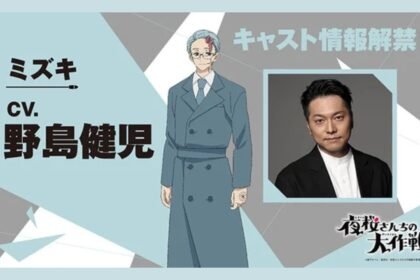Anime and manga have become global phenomena, captivating audiences with their rich narratives, vibrant characters, and visually stunning artwork. While these forms of entertainment have evolved over the years. They owe much of their storytelling prowess to the traditional techniques rooted in Japanese culture. The influence of traditional Japanese storytelling techniques on anime and manga is undeniable. As they provide a foundation for engaging narratives and captivating visuals. In this article, we will explore the various ways in which traditional storytelling techniques have shaped the world of anime and manga. Examining their impact on character development, plot structure, visual aesthetics, and cultural representation.
Character Development: Breathing Life into the Story
In traditional Japanese storytelling, characters are often portrayed with depth and complexity. Reflecting the multidimensional nature of human existence. This emphasis on character development has seamlessly translated into the world of anime and manga. Where characters are meticulously crafted to evoke empathy and resonate with audiences. Take, for example, the iconic Studio Ghibli films directed by Hayao Miyazaki. Films like “Spirited Away” and “Princess Mononoke” feature protagonists who undergo personal growth and transformation. Navigating intricate moral dilemmas that challenge their values and beliefs. The portrayal of nuanced characters in anime and manga stems from the traditional Japanese storytelling technique of exploring the human psyche. Allowing viewers and readers to form deep connections with the characters they encounter.
Plot Structure: Weaving Intricate Tales in Traditional Anime Storytelling
Traditional Japanese storytelling often incorporates nonlinear narrative structures. Unfolding stories through a mosaic of interconnected events and perspectives. This narrative approach, known as “kakidashi” or “kakikudashi,” has found its way into the world of anime and manga. Adding layers of complexity and unpredictability to the storytelling process. An excellent example of this can be seen in the anime series “Death Note,”. Where the plot revolves around a battle of wits between two brilliant protagonists—the detective L and the enigmatic Light Yagami. The intricate plot twists and turns. Keeping viewers on the edge of their seats as they navigate a labyrinth of moral dilemmas and ethical questions. By embracing the nonlinear narrative structure. Anime and manga creators infuse their works with suspense, surprise, and a heightened sense of anticipation.
Visual Aesthetics: Painting Worlds with Imagination in Traditional Anime Storytelling
Japanese storytelling has long been associated with vivid imagery and visual aesthetics. And this tradition continues to thrive in the realm of anime and manga. The intricate attention to detail, vibrant colors. And imaginative landscapes that characterize traditional Japanese art have been seamlessly integrated into the visual design of these mediums. For instance, in the visually captivating anime film “Your Name,” directed by Makoto Shinkai. Breathtaking scenes of rural landscapes, bustling cities, and celestial realms come to life. Enchanting viewers with their ethereal beauty. The influence of traditional Japanese art forms such as ukiyo-e (woodblock prints) and sumi-e (ink wash paintings). Can be traced in the meticulous attention to detail and the skillful use of color and composition seen in many anime and manga works. These visual aesthetics not only enhance the overall viewing experience. But also serve as a bridge between traditional Japanese art and contemporary storytelling.
Cultural Representation: Preserving Heritage in Traditional Anime Storytelling
Anime and manga serve as powerful mediums for cultural representation. Traditional Japanese folklore, myths, and legends often find their way into anime and manga narratives. Providing a glimpse into the rich cultural heritage of Japan. Films like “Princess Kaguya” draw inspiration from the ancient folk tale “The Tale of the Bamboo Cutter,”. While the manga series “Naruto” incorporates elements of Japanese folklore and mythology. Such as the Nine-Tailed Fox and the concept of ninja. By integrating these cultural elements, anime and manga creators pay homage to their roots. Fostering a sense of pride and appreciation for Japanese traditions among both domestic and international audiences.
Further Readings: Golden Kamuy and The Significance of Ainu Culture
More example of Anime and Manga with Traditional Storytelling of Japanese Culture
“The Tatami Galaxy”
This anime series, based on the novel by Tomihiko Morimi. Explores themes of youth, regret, and the pursuit of happiness. Through its unique narrative structure, the protagonist relives his university life in different parallel universes, each with its own set of choices and consequences. With its introspective and philosophical storytelling, “The Tatami Galaxy” reflects the traditional Japanese concept of “mono no aware,” the bittersweet awareness of the transient nature of life.
“Natsume’s Book of Friends”
This heartwarming anime series follows the journey of Takashi Natsume, a boy who can see spirits and inherits a book containing the names of powerful yokai (supernatural creatures). As Natsume returns the names to their rightful owners, he develops deep connections with both humans and yokai, exploring themes of empathy, friendship, and the coexistence of the spiritual and human realms. Drawing inspiration from Japanese folklore and yōkai mythology, the series captures the essence of traditional storytelling with its episodic narratives and exploration of the supernatural.
Conclusion
The influence of traditional Japanese storytelling techniques on anime and manga is a testament to the enduring power of these narrative forms. The depth of character development, the intricacies of plot structure, the visual aesthetics, and the cultural representation all bear the indelible mark of traditional Japanese storytelling. As anime and manga continue to captivate audiences worldwide, they serve as a bridge between past and present, weaving together the rich tapestry of Japanese culture with the boundless possibilities of contemporary storytelling. The legacy of traditional storytelling techniques lives on in these modern mediums, inviting us to embark on imaginative journeys, explore the human condition, and celebrate the enduring art of storytelling.













